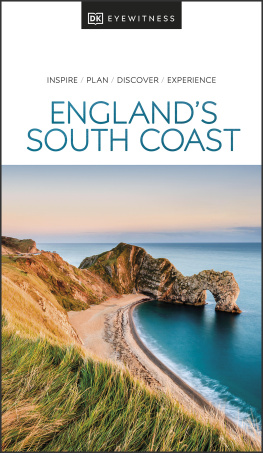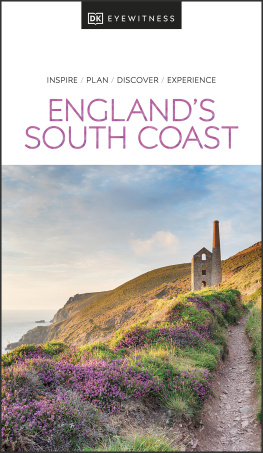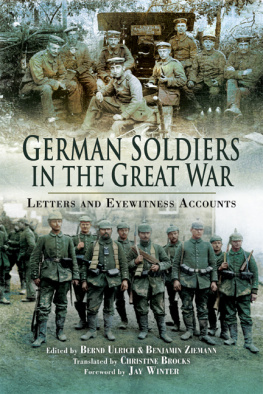

Letters from Kimberley:
Eyewitness Accounts from the South African War
This edition published in 2013 by Frontline Books,
an imprint of Pen & Sword Books Ltd,
47 Church Street, Barnsley, S. Yorkshire, S70 2AS
www.frontline-books.com
Copyright Edward Spiers, 2013
The right of Edward Spiers to be identified as the author of this work has been asserted by him in accordance with the Copyright, Designs and Patents Act 1988.
ISBN: 978-1-84832-657-6
eISBN: 9781473831742
All rights reserved. No part of this publication may be reproduced, stored in or introduced into a retrieval system, or transmitted, in any form, or by any means (electronic, mechanical, photocopying, recording or otherwise) without the prior written permission of the publisher. Any person who does any unauthorized act in relation to this publication may be liable to criminal prosecution and civil claims for damages.
CIP data records for this title are available from the British Library
For more information on our books, please visit
www.frontline-books.com, email info@frontline-books.com
or write to us at the above address.
Printed and bound by CPI Group (UK) Ltd, Croydon, CR0 4YY
Typeset in ITC Galliard 10/13pt
Contents
List of Illustrations
1. The searchlight at Wesselton Mine, with soldiers of the Loyal North Lancashire Regiment. McGregor Museum, Kimberley photographs
2. Lt-Col Robert Kekewich. McGregor Museum, Kimberley photographs
3. Cecil Rhodes, Mrs Rochfort Maquire, and defenders of Kimberley. National Army Museum (NAM 1971-01-36-5-13)
4. Relief of Kimberley. Charge of the Brigade of Guards. A. S. K. Brown Military Collection, Brown University Library
5. Lord Methuens advance Crossing the Modder River. A. S. K. Brown Military Collection, Brown University Library
6. Lt-Gen Lord Methuen. A. S. K. Brown Military Collection, Brown University Library
7. Kimberley people waiting to draw their rations. McGregor Museum, Kimberley photographs
8. Miss Agnes Oliver with artillery shells. A. S. K. Brown Military Collection, Brown University Library
9. Women and children waiting to go down a mine in Kimberley. McGregor Museum, Kimberley photographs
10. Advance on Kimberley Lancers at Klip Drift. A. S. K. Brown Military Collection, Brown University Library
11. Entrances to the underground tunnel at Kimberley. A. S. K. Brown Military Collection, Brown University Library
12. The 10th Hussars Crossing Klip Drift. A. S. K. Brown Military Collection, Brown University Library
13. General Frenchs meeting with Mr. Cecil Rhodes. A. S. K. Brown Military Collection, Brown University Library
14. General Cronj in Captivity. A. S. K. Brown Military Collection, Brown University Library
List of Maps
Acknowledgements
I should like to acknowledge the grant from the Scouloudi Foundation in association with the Institute of Historical Research, which enabled me to complete the research for this work.
I should like to acknowledge, too, the kind permission of the Trustees of the National Library of Scotland to quote from the papers of the first Earl Haig in their possession; Dr A. Massie for permission to quote from several archival collections in the possession of the National Army Museum; to the Rhodes Trust and the Bodleian Library, University of Oxford, for permission to quote from the papers of Cecil Rhodes; the Fusiliers Museum of Northumberland for permission to quote from collections of papers in its possession; the Royal Engineers, Library and Archive for permission to quote from papers in its possession; and to Mr James Methuen-Campbell for permission to quote from the papers of the third Baron Methuen in the Wiltshire and Swindon History Centre. I should also like to recognize the assistance of many other individuals: Ms Lauren Jones and Adam Walsh, Royal Engineers Museum, Library and Archive; Miss Jane Davies, curator, Lancashire Infantry Museum, Fulford Barracks, Preston; Ms Lesley Frater, Fusiliers Museum of Northumberland, Alnwick Castle; Ms Lucinda Jones, Wiltshire & Swindon History Centre; Ms Lucy McCann, Bodleian Library of Commonwealth & African Studies, Rhodes House, Oxford; Mr Thomas B. Smyth, Black Watch Regimental Archive, Balhousie Castle, Perth; and Major L. White of Cornwalls Regimental Museum, Bodmin. I should also like to thank the staffs of the British Library (Newspaper Collection) at Colindale, the Templer Study Centre of the National Army Museum, the National Library of Scotland, and of the Reference and Local Studies Centres in Liverpool Central Library, Sheffield Central Library, Wakefield Local Studies Library and Leeds Central Library.
I should also like to express my thanks to various colleagues who have assisted me in this project, namely Professors John Gooch, Andrew Thompson and Richard Whiting (University of Leeds), Professor Ian F. W. Beckett (University of Kent), Professor Fransjohan Pretorius (University of Pretoria), and Dr Jeremy A. Crang (University of Edinburgh).
I am particularly grateful to David Appleyard for the services of the Graphic Support Unit (University of Leeds) in the preparation of the maps; to Peter Harrington, Anne S. K. Brown Military History Collection, Brown University, Rhode Island, for his assistance in finding images for the volume; to the McGregor Museum, Kimberley, South Africa, for permission to use photographic images from its collections; to Richard Dabb for permission to use an image of Cecil Rhodes from the collection of the National Army Museum; and to the editorial support and encouragement of Michael Leventhal, Stephen Chumbley and Kate Baker. As ever, I remain profoundly appreciative of the support and tolerance of Fiona, my wife, and Robert and Amanda, our children, for enduring the preparation of another book.
Edward M. Spiers
Introduction
Kimberley: The Siege and its Significance
Only three days after the expiry of the Boer ultimatum on 11 October 1899, which precipitated the South African War (18991902), the siege of Kimberley began. It would last 124 days from 14 October 1899 to 15 February 1900. This siege, alongside the investments of Mafeking (Mafikeng) and Ladysmith, was soon regarded as an iconic episode in the first part of the war, and these towns became early objectives for the relief forces sent from the United Kingdom and the colonies. If Kimberley possessed neither the strategic significance of Ladysmith nor a charismatic leader like Colonel R. S. S. Baden-Powell in Mafeking, it was by far the largest and wealthiest town invested. With its population swollen to nearly 50,000 by incoming refugees, it had 13,000 whites, 7,000 coloureds and Indians, and 30,000 black people, according to the categorization of the time. Known as Diamond City, Kimberley was an obvious target on account of its mineral wealth but it was also a great industrial centre, making it a plum deposit of capital, coal, foodstuffs and other stores, railway equipment, engineering workshops, scrap iron (potential shrapnel), and dynamite.
Boer enmity towards Rhodes, and their grievances over Kimberley, derived from the origins of the town amidst the upsurge of diamond prospecting in the early 1870s. Located on the Vooruitzigt farm near the confluence of the Vaal and Orange Rivers, the town was first known as New Rush after the frenetic stampede of prospectors and speculators, who sought the newly found mineral wealth. A dispute soon erupted over the ownership of the diamond fields, with the claims of the local Griqua leader, Nikolaas Waterboer, challenged by the Transvaal and the Orange Free State. Cape Colony supported Waterboer, and in subsequent mediation between the claims of the Transvaal and Waterboer (the Free State refused to participate), Robert Keate, the lieutenant-governor of Natal, ruled in favour of Waterboer. Under various proclamations, the territory of Waterboer became known as Griqualand West (27 October 1871) with a government similar to that of Cape Colony. On 5 July 1873, New Rush was renamed Kimberley after Lord Kimberley, the secretary of state for the colonies, and three years later the Free State was persuaded to renounce its claims for a financial settlement of 90,000. On 15 October 1880 Griqualand West was formally incorporated within Cape Colony, a development that hardly assuaged the Boers sense of grievance.











